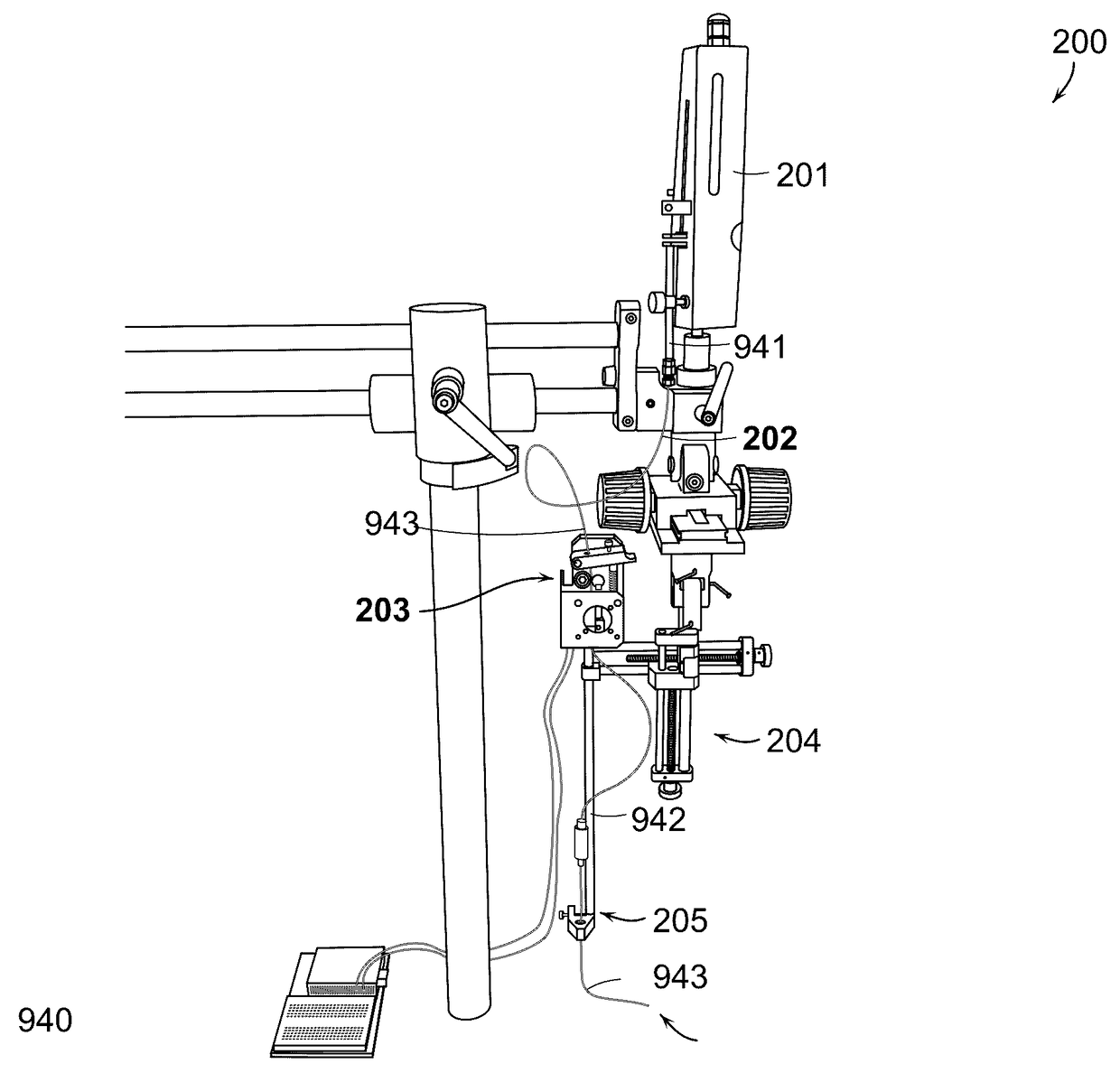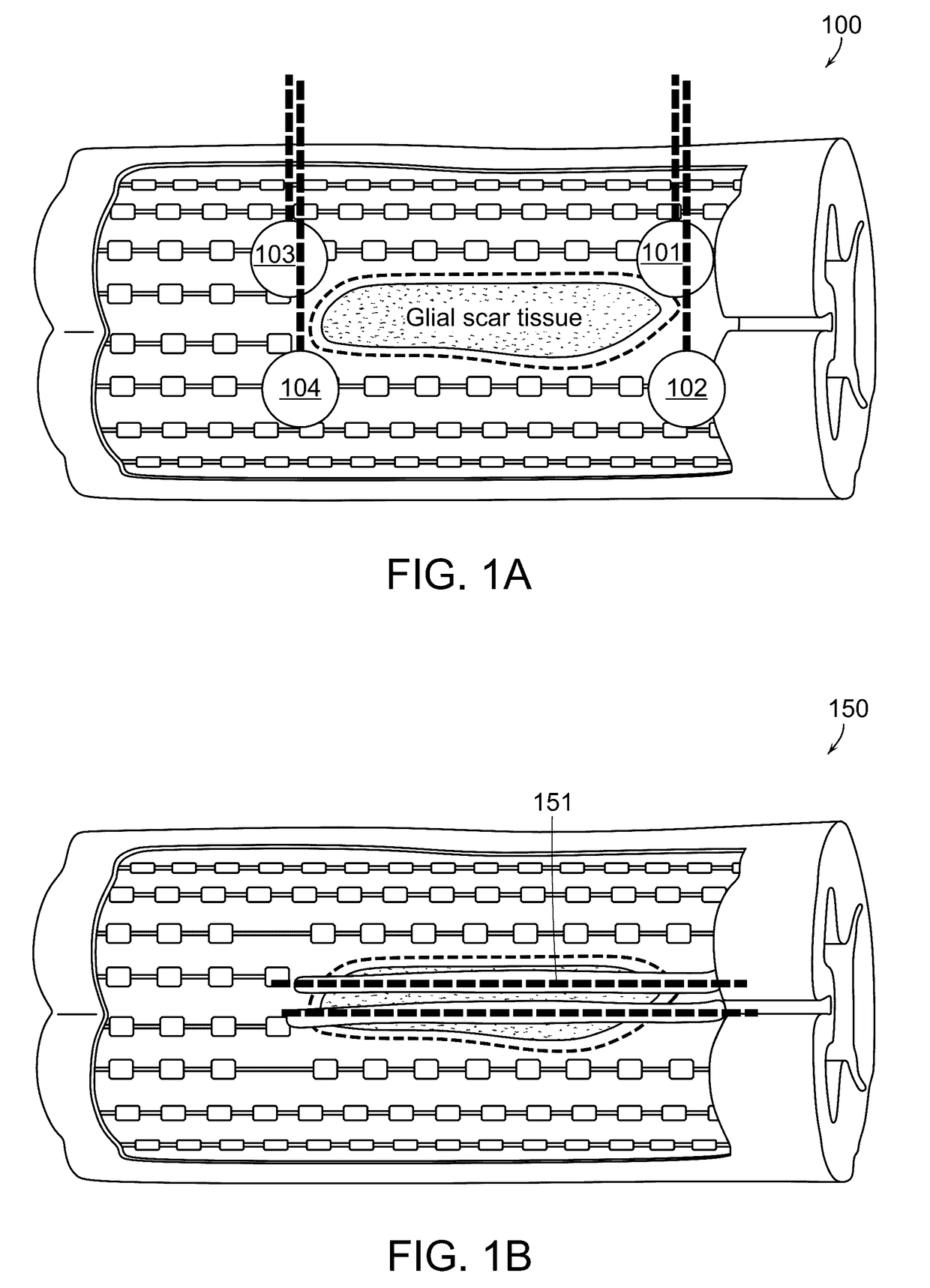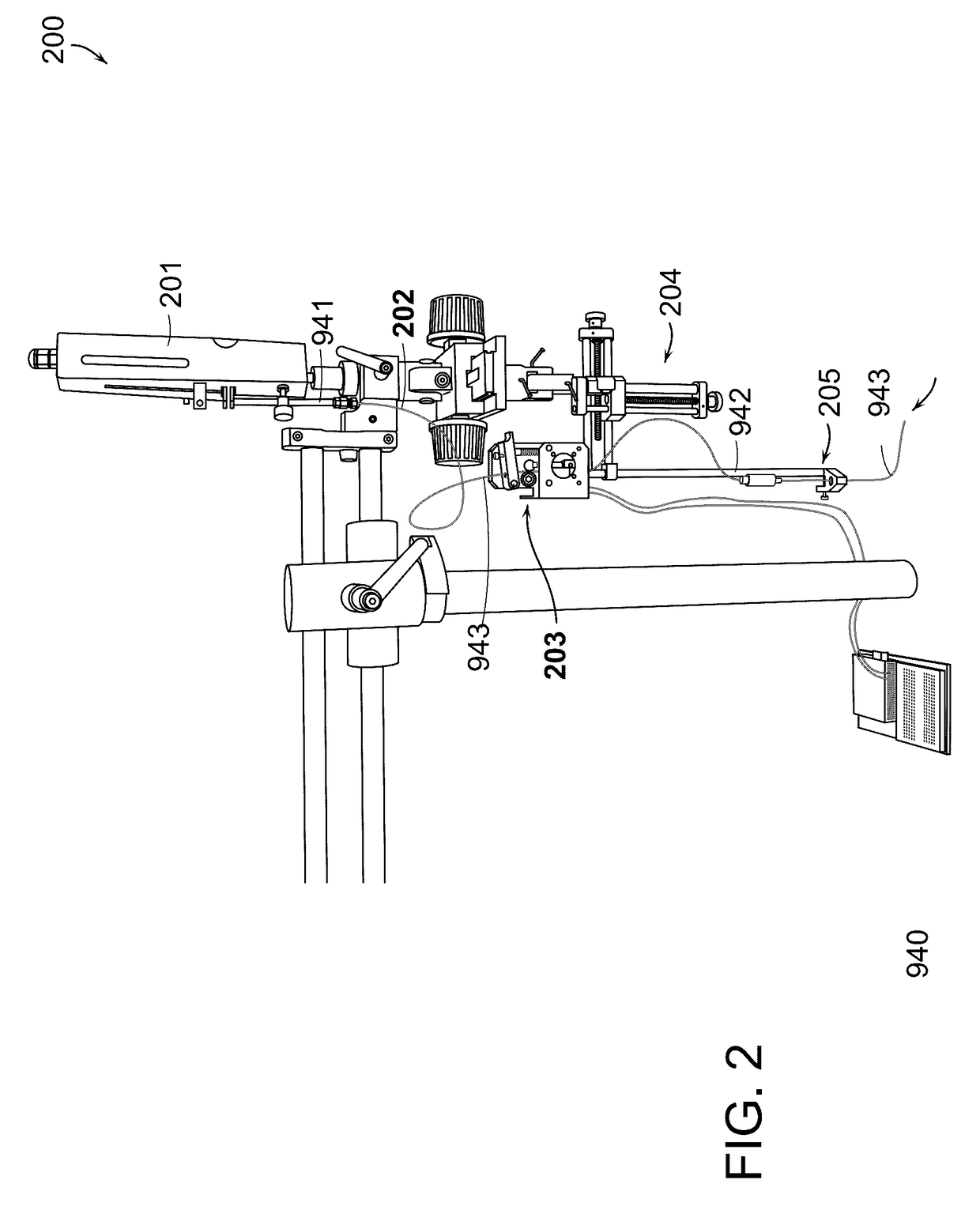Methods and Systems for Delivery of a Trail of a Therapeutic Substance into an Anatomical Space
- Summary
- Abstract
- Description
- Claims
- Application Information
AI Technical Summary
Benefits of technology
Problems solved by technology
Method used
Image
Examples
example 1
Operation of Experimental Injection Device in Surgical Setting
[0409]The present invention may is used to perform an experimental injection of neural stem cells into the spinal cord of pigs according to the following protocol. A portable, experimental injection device is constructed in accordance with the specification and figures, set forth herein. Three Yucatan mini-pigs of 20-25 kg are injected using a preferred embodiment of the present invention. Each pig receives a thoracic T10 laminectomy according to procedures well known in the art. No myelotomy is performed. The pia is nicked with a needle at the site of entry of the injection needle of the experimental injection device. The injection needle utilized in the trial is composed of Nitinol® (nickel-titanium alloy), hereinafter referred to as “Nitinol needle.”
[0410]The injection utilizes an aqueous composition of hyaluronic acid [0.75% w / v in divalent ion-free phosphate buffered saline] and human neural stem cells [StemPro, Ther...
example 2
In Vitro Therapeutic Trails Injection
[0421]FIG. 50 illustrates trails injected at an angle in a “tent” formation around a prophetic injection site. Two opposing 2-cm long trails injected at 10 degree angles into a 0.6 wt. % agarose gel slab. The trails are composed of 0.75 wt. % hyaluronic acid in PBS and methylene blue was added for visualization purposes. FIG. 51A is a top view and 51b is a side view illustrating the angular injections and the described “tent” feature which may be used to inject a trail of cells and / or therapeutic substances proximal to an injury site in the spinal cord. With regard to the injection procedure, reference may be made to Example 1 above.
example 3
In Vitro Injection Angle Testing
[0422]An experimental test of the accuracy of injecting trails of cells and / or a therapeutic substance was conducted in an in vitro test model to determine the accuracy and extrusion depth of injections performed with an embodiment of the present invention. A certain embodiment of injection device 900 employing a goniometer 950 was utilized through the test procedure. Thus, a preliminary test of the accuracy of the goniometer angle mechanism was performed. The test was accomplished by measuring the extrusion depth at various goniometer angles.
[0423]Materials. Tests were performed utilizing gel slabs composed of 0.6 wt. % agarose in diH20. The liquid composition injected was a solution of 0.75 wt. % hyaluronic acid (“HA”) with methylene blue added for color. Trails of methylene blue were measured with a ruler.
[0424]Procedure. An injection needle 943 composed of nitinol was extruded 20 mm above the test gel slab. The goniometer on an embodiment of the d...
PUM
| Property | Measurement | Unit |
|---|---|---|
| Angle | aaaaa | aaaaa |
| Angle | aaaaa | aaaaa |
| Angle | aaaaa | aaaaa |
Abstract
Description
Claims
Application Information
 Login to View More
Login to View More - R&D
- Intellectual Property
- Life Sciences
- Materials
- Tech Scout
- Unparalleled Data Quality
- Higher Quality Content
- 60% Fewer Hallucinations
Browse by: Latest US Patents, China's latest patents, Technical Efficacy Thesaurus, Application Domain, Technology Topic, Popular Technical Reports.
© 2025 PatSnap. All rights reserved.Legal|Privacy policy|Modern Slavery Act Transparency Statement|Sitemap|About US| Contact US: help@patsnap.com



